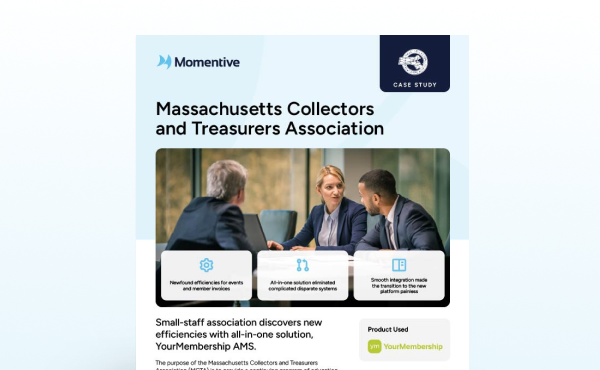Getting your association’s new board members up and running quickly and effectively benefits you, your board, and your organization.
Here are 10 tips for hosting a valuable board orientation meeting that sets your new board members up for success.
By Kyela Bishop, YourMembership Marketing Coordinator, Momentive Software
Each year, your association probably has some number of board members that rotate in and out. Getting the new board members up-to-speed isn’t always easy – especially when you have a small staff and time is precious. But it’s well worth the effort to host a well-planned board orientation meeting to get new board members started off on the right foot.
Giving your new board members information and resources that they need to fulfill their role helps them to be more productive, faster. It also benefits you and your association because it helps to ensure your entire board is ready to get to work on behalf of your organization.
10 tips for a great board orientation meeting for your association
A board orientation meeting is a formal introduction to your new board members about their role with your organization. Here are 10 tips to make your board orientation meeting as valuable as possible:
1. Include current board members.
Some of your board might be staying and working directly with the new board members. And even those who are leaving the board can help to welcome new board members and share their experiences. So, be sure to invite them all to the orientation meeting.
2. Share the agenda in advance.
Let everyone know what you plan to cover in your meeting. Also, introduce all board members (new and current) via email if they haven’t met before
3. Get the board talking.
At the beginning of the meeting, provide a networking environment in which your board can walk around the room and have one-on-one conversations with each other. Plan a fun ice breaker to allow board members the opportunity to get to know each other better
4. Introduce key team members from your organization.
Your new board members will be working with some of your association’s staff, so make sure they know names, faces, and roles. Share an organizational chart that shows each team member’s responsibilities. Be sure to point out which staff members the board will communicate with and how those communications will happen
5. Review your board handbook.
Even if you don’t have a written board handbook, there are important items that should be covered with the board. These include:
- An overview of the association’s mission and purpose
- A review of board member duties, including a clear list of responsibilities and time requirements
- A run-down of tools and resources available to the board, such as your association’s website, online community, guidelines for social media and other association communications, and board reports
BONUS TIP: Learn more ideas for how to create a board handbook for your association in this resource from BoardSource: What Goes into a Board Manual?
6. Review last year’s annual report.
Help new board members get up-to-speed by going through your association’s top accomplishments from the previous year. Review financial data from last year, including membership dues, non-dues revenue, and any revenue you might have from a foundation. Share your membership growth and retention numbers. And be sure to highlight any key organizational issues.
7. Look to the year ahead.
Make sure your new board members understand any areas in which your association is expecting to change. For example, share key organizational areas and explain if there is an expected decrease, increase, or no change. And be sure to point out if something is being added to your organization for the first time, like new association software, that would potentially impact your staff or your members.
BONUS TIP: This can be a good time to introduce key trends in the association sector. Consider reviewing key findings from the 2022 Association Trends Study by Momentive Software to help your board members get a feel for what’s happening with today’s associations and members
8. Ask for a quote.
Member testimonials can be a powerful membership marketing tool. And so can board member testimonials! Ask why each board member decided to be on your board. Share their quotes across your marketing channels as an opportunity for your members and prospective members to get to know you board better.
9. Talk about what comes next.
To wrap up the board orientation meeting, don’t forget to share a list of scheduled meetings for the entire year. Include dates, locations, and times. This approach helps your entire board to plan to attend as many meetings as possible.
10. Send a follow-up email.
Follow up with your board members by sending an email thanking them for attending the orientation meeting. Include links to any materials from the meeting that you want board members to be able to access electronically.
BONUS TIP: Keep in mind that you can use your association’s online community to set up a group for board members in which they (and you!) can connect with each other, share documents and updates, and make decisions.
Learn more about getting your new board on board with your association
Getting new board members up and running quickly and effectively is critical to their success.
Learn more tips and techniques about onboarding your new board members: Watch The Board Orientation Checklist for Associations.







